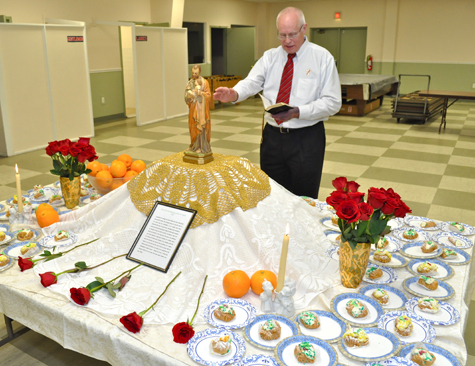Column: Stepping beyond the Celtic circle
On my way to a Saturday afternoon haircut, my 11-year-old world was knocked off kilter, turned topsy-turvy, thrown for a loop and all that I thought I knew and held dear was suddenly, cruelly stripped away.
It’s a day I’ll never forget.
It’s the day I learned the Beatles weren’t Catholic.
A year or so later, I returned from a Boy Scout meeting with a question for my folks: “The pastor [of the Methodist Church, which graciously gave the scouts the use of his church’s meeting room] asked us all to a special service next Sunday. Can I go?” The word “ecumenical” was not part of my everyday speech back then, but that’s what the pastor, good man that he was, had in mind.
The answer was quick and unequivocal: “Of course not! It’s not Catholic!”
My purpose here is not to claim the credentials of a consistent and conscientious Catholic. Y’all know me better than that. I’m trying to set the stage for what was going through my head two Saturdays ago when I walked into Congregation Tifereth Israel synagogue in Greenport to take part in its Purim observance.
You heard me right. A guy who stands neck-deep in a sea of Irishness — gimme a break, you know what I mean — suddenly finds himself entering hitherto unknown cultural and religious territory.
Why? Because fellow Thursday night Irish music jammer and synagogue member Dave Berson asked. Since Purim observations can be boisterous and fun, why not have some cross-cultural pollination?
But that’s not what I was thinking as I took off my jacket. What are these people doing in masks and costumes? Hoo boy, what have I gotten myself into?
“Boy, you should have seen the look on your face,” the aforementioned Mr. Berson said some days later.
Purim, by the way, recounts the story in the Book of Esther about this guy Haman, one nasty character, who planned to kill the Jews. Queen Esther would have none of that and foiled his plot. It’s a day of deliverance involving feasting and rejoicing. And every time the name Haman is mentioned, the congregants drown out the sound with noisemakers.
And what’s more noisy than a bunch of guys singing pub songs?
It was a blast and, indications are, well received. Ah, another barrier torn down.
During the evening Rabbi Myron Fenster, good man that he is, named our group The Trombeniks. OK, never saw that name in the Baltimore Catechism.
It means a ne’er-do-well or, in the pre-PC era, a bum.
Wasn’t sure how I felt about that at first, but what the heck. I’ve been called worse and it was all good fun, right?
How about The Merry Trombeniks? The Traveling Trombeniks? The Fabulous Trombeniks? We’ll need some really kickin’ album cover art and better get crackin’ on scheduling our world tour.
How do you get to Carnegie Hall? Practice, practice.
I stepped outside the Celtic circle again this past Friday night at the invitation of North Fork Italian American Club president Don Russo. Their gathering at the town rec center on Peconic Lane in Peconic was devoted to the Feast of St. Joseph. Now this I knew something about.

Me Ma’s very best friend, Delores Carlone — obviously not Irish, but a good person nonetheless — could be counted on to bring over traditional homemade St. Joseph’s Day pastries. St. Joseph’s Day falls on March 19, two days after you-know-what. In the U.S., honoring the spouse of Mary is far more solemn and rooted in religious tradition than what unfortunately often passes for remembering this Patrick fellow.
I witnessed the blessing of the St. Joseph’s table, on which they placed a statue of the saint, candles, flowers and zeppola, a Sicilian pastry. (St. Joseph is the patron saint of pastry chiefs? Who knew?)
According to tradition, Sicily was hit by a severe drought in the Middle Ages and the people prayed to their patron saint, San Guiseppe, to bring them rain, promising a large feast in return. The rain came, as did the banquet. Hence Mrs. Carlone’s zeppola — great stuff by the way.
This wasn’t as big a cultural diversion as going to the synagogue, since the Irish and Italians have much in common. There’s Catholicism, of course, coming to America dirt poor, settling in New York, finding strength in keeping the old traditions alive, bugging the hell out of each other but also marrying each other.
I didn’t wear red Friday night (again, who knew?) but I did have a zeppola or two and thoroughly enjoyed their convivial hospitality.
You know, I could get used to this.
When’s the Polish Town Festival again?


